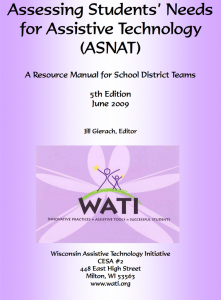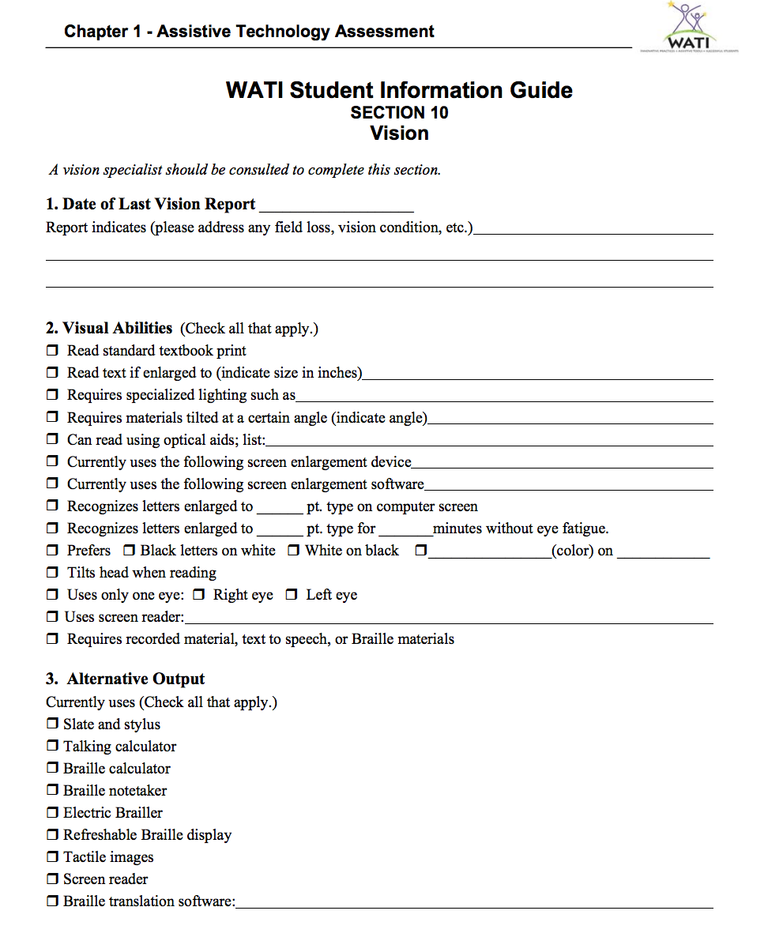Assistive Technology Assessment
Submitted by Charlotte Cushman on Mar 06, 2016

The Assessing Students Needs for Assistive Technology (ASNAT) resource manual is a 525-page document that contains a wealth of information on a wide range of assistive technology topics. Many of the chapters use the SETT
(Student, Environment, Task, and Tool) format to guide the decision-making process. While all of the content is not specific to students with visual impairments, much of it is applicable or can be easily modified to guide teams in selecting the assistive technology that is most appropriate for an individual student.
Table of Contents:
- Chapter 1 – Assistive Technology Assessment
- Chapter 2 - Assistive Technology for Seating, Positioning and Mobility
- Chapter 3 – Assistive Technology for Communication
- Chapter 4 – Assistive Technology for Access to Computers
- Chapter 5 – Assistive Technology for Writing, including Motor Aspects of Writing and Composition
- Chapter 6 – Assistive Technology for the Composition of Written Material
- Chapter 7 – Assistive Technology for Reading
- Chapter 8 – Assistive Technology for Mathematics
- Chapter 9 – Assistive Technology for Organization
- Chapter 10 – Assistive Technology for Recreation and Leisure
- Chapter 11 – Assistive Technology for Activities For Daily Living
- Chapter 12 – Assistive Technology for Students who are Blind or Have Low Vision
- Chapter 13 – Assistive Technology for Students who are Deaf or Hard of Hearing
- Chapter 14 – Assistive Technology for Students with Multiple Challenges
- Chapter 15 – Documenting Assistive Technology into the IEP
- Chapter 16 – Funding Assistive Technology
Each section also includes a checklist that can be downloaded by teams doing an assistive technology assessment on an individual student. These forms are to be used while referring back to the full chapter.
Available as a free download from WATI (Wisconsin Assistive Technology Initiative) and the Wisconsin Department of Public Instruction (DPI).
5th edition (2009)
Attached Files:

